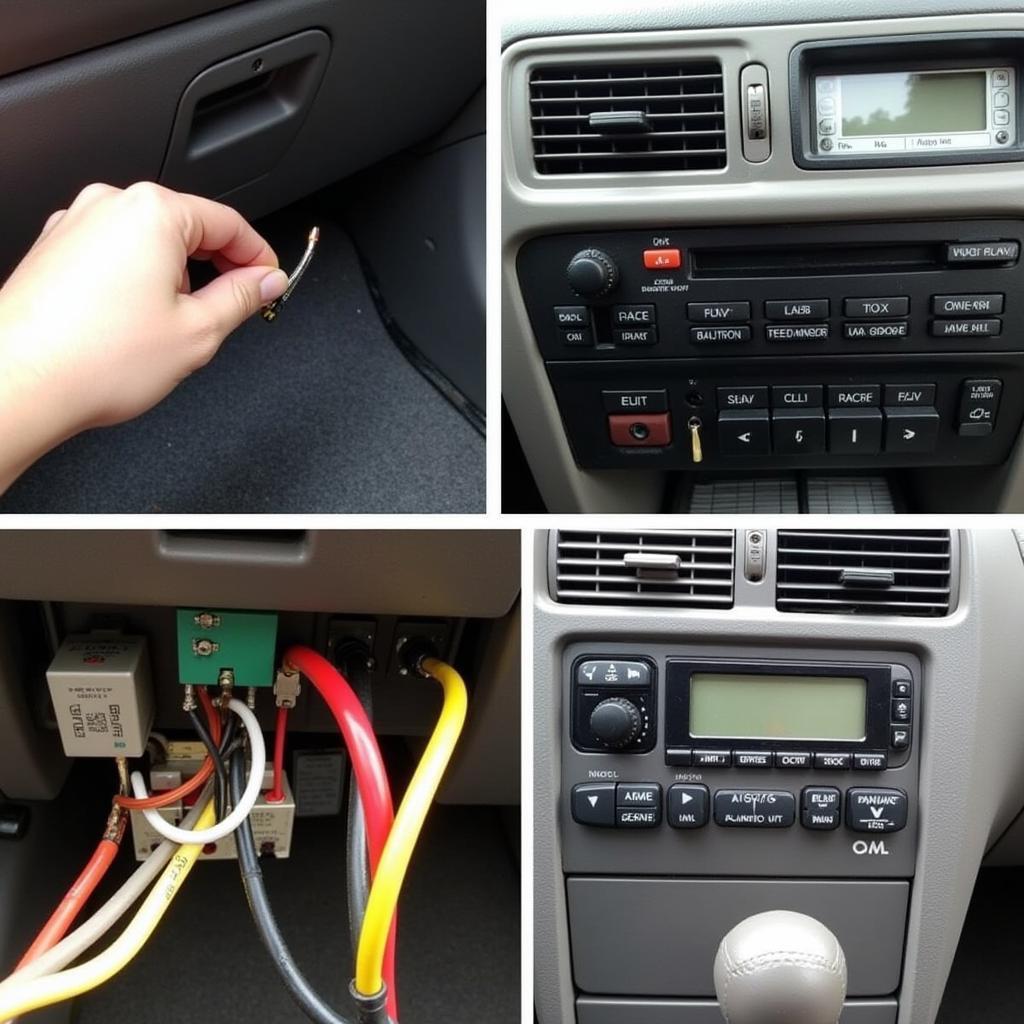A good car battery should last for years, but what if it keeps dying even after testing good? This frustrating issue can leave you stranded and searching for answers. This comprehensive guide explores why your battery keeps dying despite testing good and provides effective solutions to get you back on the road. battery tested good but keeps dying
Understanding the Problem: Why Your Battery Keeps Dying
Having a car battery that constantly dies is a common problem, even if the battery tests good. It often indicates an underlying issue beyond a simple battery fault. The culprit is typically a parasitic draw, where a component continues to consume power even when the vehicle is off. This constant drain slowly depletes the battery over time, leading to a dead battery. Other potential causes include faulty charging systems, corroded terminals, or extreme temperatures.
 Common Parasitic Draw Examples
Common Parasitic Draw Examples
Identifying the Culprit: How to Diagnose a Parasitic Draw
Diagnosing a parasitic draw requires a systematic approach. First, ensure your battery and alternator are tested. If they are functioning correctly, the next step is to use a multimeter to measure the current draw with the vehicle off. This will pinpoint if there’s an excessive drain.
Using a Multimeter to Find the Draw
- Set your multimeter to the DC amps setting.
- Disconnect the negative battery terminal.
- Connect the multimeter in series between the negative battery terminal and the negative battery cable.
- Observe the reading. A small drain (less than 50 milliamps) is normal. Anything higher indicates a parasitic draw.
 Testing for Parasitic Draw with a Multimeter
Testing for Parasitic Draw with a Multimeter
Isolating the Source of the Drain
To identify the specific component causing the drain, begin removing fuses one at a time while observing the multimeter reading. A significant drop in the reading after removing a particular fuse indicates the circuit containing the culprit. Consult your vehicle’s owner’s manual to identify the components within that circuit. car battery is good but keeps dying
Common Causes and Solutions
Several common culprits can lead to a parasitic draw. These include interior lights, faulty door latch switches, aftermarket accessories, and even a faulty alternator or voltage regulator.
Faulty Alternator or Voltage Regulator
While a good battery test can rule out a faulty battery, the charging system itself can also be the problem. A failing alternator may not charge the battery efficiently, or a faulty voltage regulator might overcharge the battery, leading to premature failure. jeep battery keeps dying
“A faulty alternator can often mimic a parasitic draw, as it fails to replenish the battery’s charge,” explains automotive electrical expert, John Miller, ASE Certified Master Technician. “This often leads to misdiagnosis, as the focus shifts solely to potential drains, overlooking the charging system itself.”
Aftermarket Accessories
Installing aftermarket accessories without proper integration into the vehicle’s electrical system can create a continuous drain on the battery. Ensure any added components are professionally installed and wired correctly. car battery is dying
Interior Lights and Door Switches
Sometimes, a simple issue like a glove compartment light staying on or a faulty door latch switch can be the cause. These switches signal to the car’s computer when the door is open or closed, allowing interior lights to stay on unnecessarily.
“Often, overlooked issues like a sticky door latch switch can be the source of a persistent drain,” adds Miller. “These seemingly minor problems can cause significant battery drain over time, leading to frustrating starting issues.”
Preventing Future Battery Drain Issues
Preventing future battery drain requires regular maintenance and vigilance. Regularly inspect your battery terminals for corrosion and clean them with a baking soda and water solution. Limit the use of accessories with the engine off, and always ensure all lights and electronics are turned off before exiting your vehicle. Consider having your charging system checked annually by a qualified technician. car killing battery
Conclusion
A battery that keeps dying, even after testing good, can be a frustrating experience. By understanding the potential causes and employing the diagnostic techniques outlined in this guide, you can pinpoint the issue and get your vehicle back on the road. Regular maintenance and vigilance are crucial to preventing future battery drain issues. Addressing the root cause, rather than simply replacing the battery, is key to a long-term solution.
FAQ
-
How can I test my car battery? A simple voltage test using a multimeter can determine the health of your battery. Alternatively, most auto parts stores offer free battery testing services.
-
What is a normal parasitic draw? A normal parasitic draw should be less than 50 milliamps.
-
What if my alternator tests good, but the battery still dies? The voltage regulator might be the culprit. Have it checked by a professional.
-
Can extreme temperatures affect my car battery? Yes, both extreme heat and cold can impact battery performance and lifespan.
-
How often should I clean my battery terminals? Cleaning your battery terminals every few months is recommended, especially in harsh climates.
-
Can a bad ground cause a parasitic draw? Yes, a poor ground connection can cause various electrical issues, including a parasitic draw.
-
What if I can’t find the source of the parasitic draw? If you’re unable to locate the source of the drain, consult a qualified automotive electrician for assistance.


